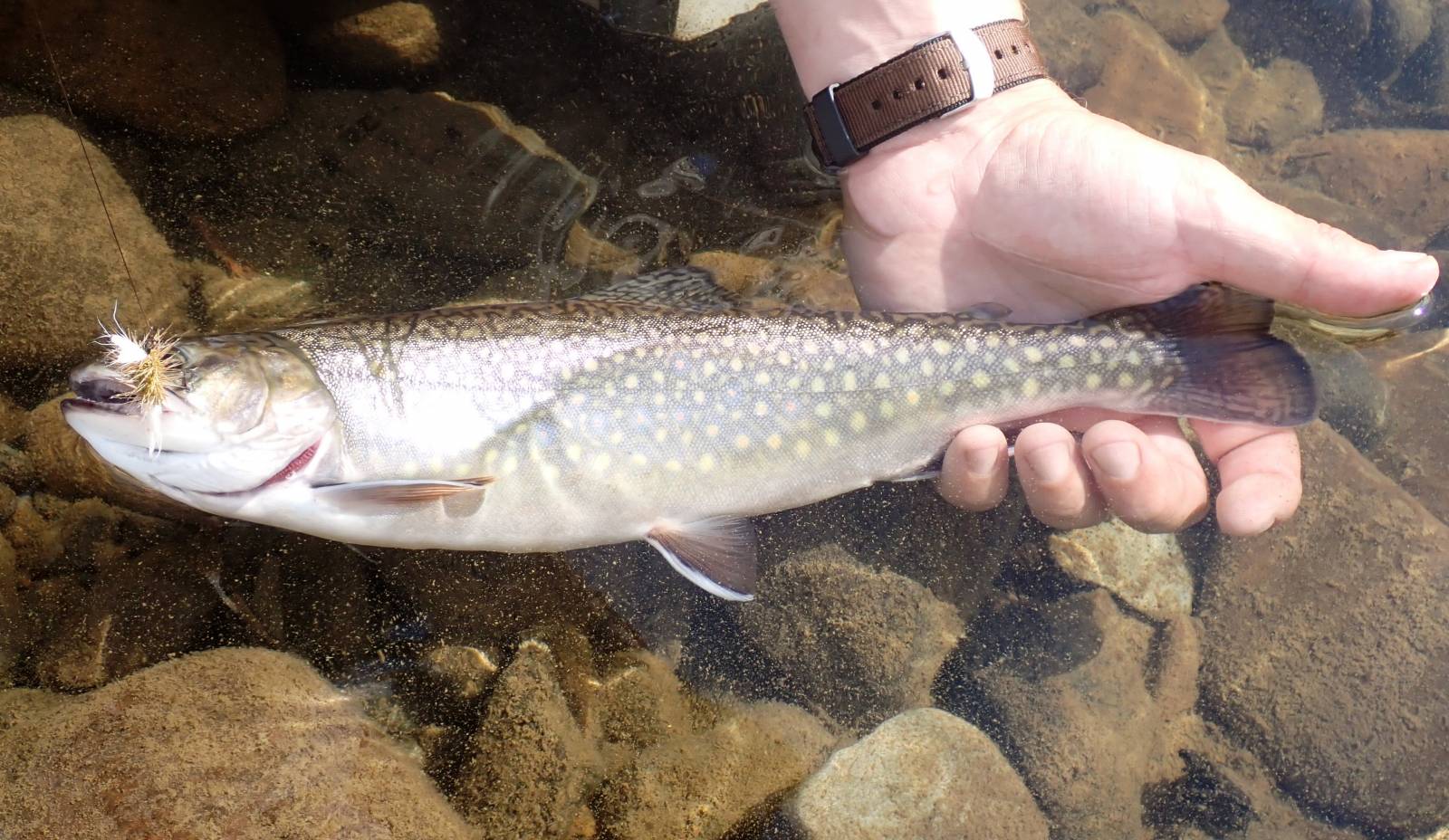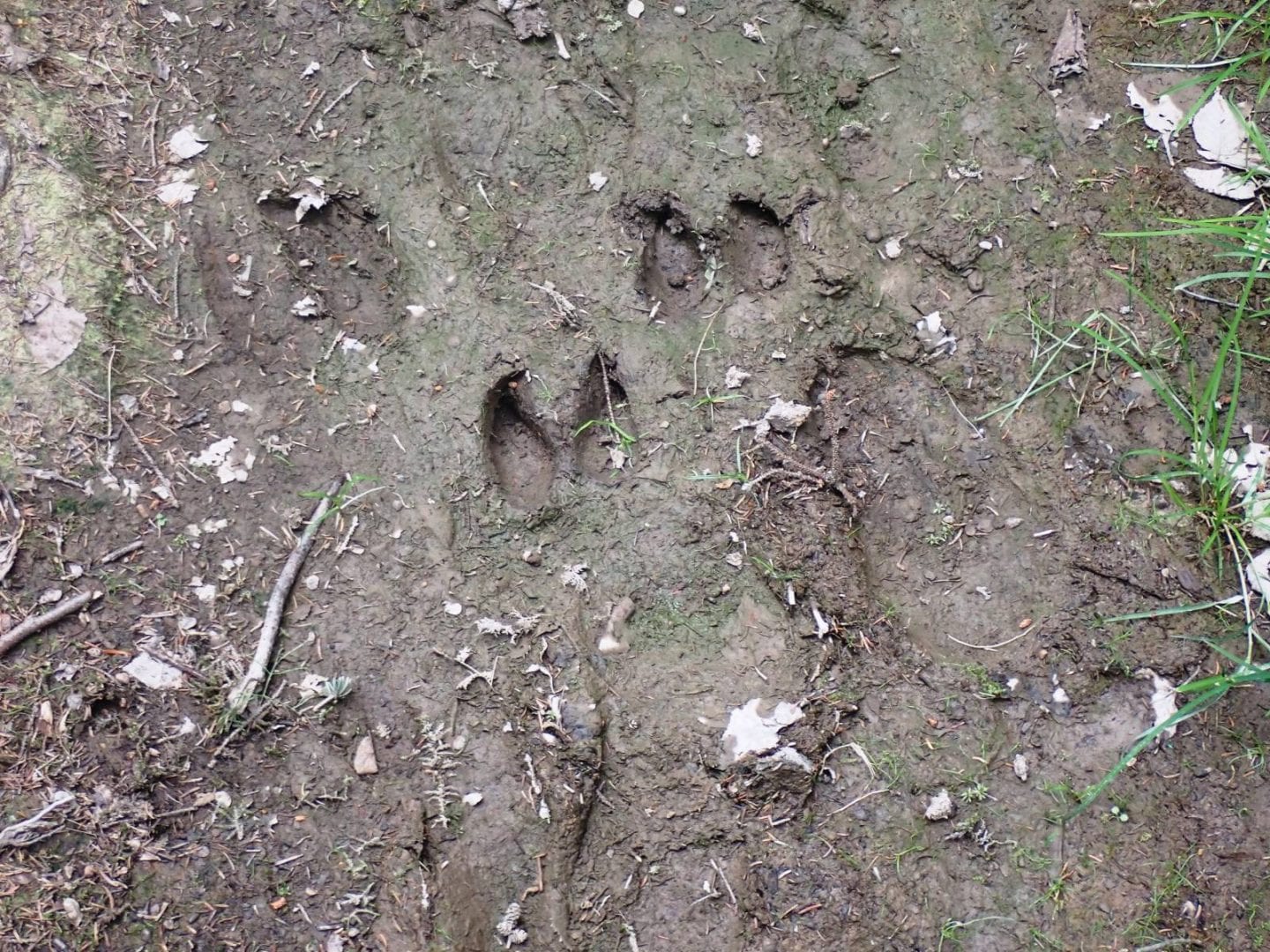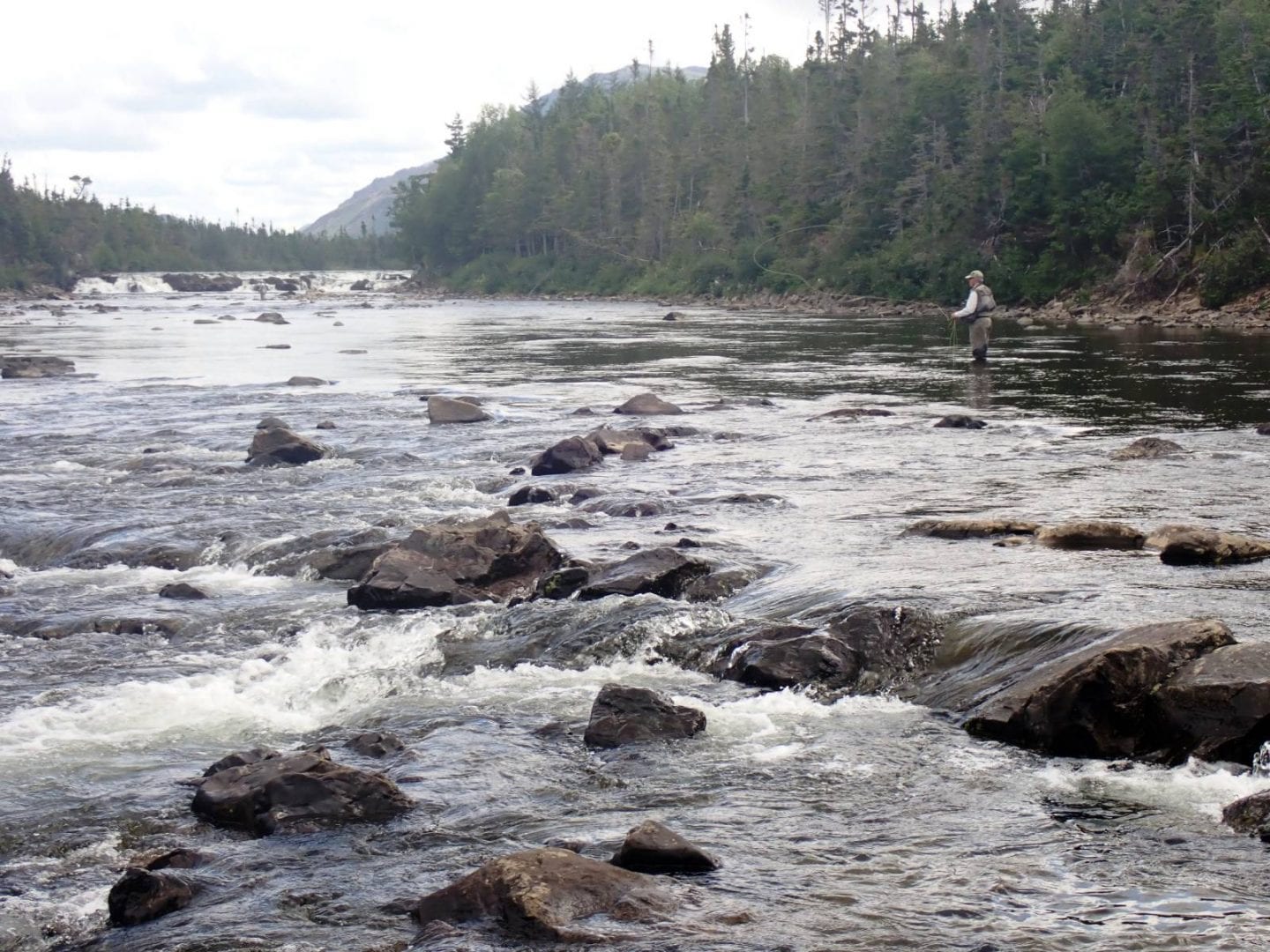Miramichi End of Summer Salmon Report
Late Summer Fishing: Miramichi and Newfoundland –
On Tuesday 8/13 I drove from Falmouth, Maine to Blackville and fished the Miramichi at Doctor’s Island that evening. Conditions were not good with low and warm water, and I knew it, but I was itching to cast a fly into the Miramichi. As anticipated there were few to no salmon holding there with evening water temperatures around 22C/72F, but we did see one jump, and that was encouraging.
The next morning I fished on the lower Cains River, and there I managed to catch one grilse on a green slime marabou fly, and briefly hooked another one. I didn’t expect a lot at this time of the year without a solid raise of water, but on Friday I was headed for Newfoundland to fish the Serpentine River where I hoped for better fishing.
In Newfoundland I met up with Dawson Hovey, and Paul Rogers. With the retirement of Newfound Outfitters Lodge founder Ray Humber, Paul has become the manager for the new owners. Dawson has fished and guided on the Serpentine several weeks each summer for 20 years. The Serpentine was made famous by Lee Wulff, and while it is a small river it has a mix of salmon sizes including a few 30 plus pound fish. Last year was my first trip, and we had good fishing with catches of salmon and grilse virtually every day. Those new to my blog can scroll back through the blog entries and read the report from last year’s trip. It was a lot more successful than 2019.

The short of it is, that although they have had a decent season on the Serpentine, with more large salmon in the mix than usual, when we arrived the river was on its bones. The water was the lowest that either Dawson or Ray had ever seen it, and getting in and out of the canoes to drag them over gravel bars made what is normally a fascinating trip from the lodge down to the falls and back a much slower and more difficult process. There were decent numbers of both salmon/grilse and sea run brookies – some of these are really big fish – holding in several pools along the river. They all, and I mean all, had lock jaw, and in 5 1/2 days of hard fishing 5 of us hooked 2 grilse. We rose maybe a couple of dozen, but these fish weren’t serious and actually never touched the dozens of dry flies of all sizes and colors that were carefully presented to them. Water temperature wasn’t the issue as we did much better on temperature sensitive brook trout, though all were of modest size. The fish were simply stale from sitting in the same pools for long periods of time with constantly lowering water. The succession of sunny days only made it worse.

We also fished a morning and evening on the much larger Humber River near Corner Brook. This is a big river, and is somewhat wider than the Miramichi. There was a good flow of water here that is regulated by a hydro dam upriver. While it has been a decent summer on the Humber we only saw two fish jump in the course of around 6 hours on the river. We spoke with a couple of long-time Humber regulars, and they confirmed that the last week or so had been very slow.
While in Newfoundland I did get an e-mail from my friend Ralph Vitale who was fishing at the Black Brook Salmon Club on the Miramichi. While the Club’s large, cold water pool held a lot of fish – of which Ralph managed to land a good one – it was slow there too, since as on the Serpentine no fresh fish were entering the system and moving between pools. The lack of rain is the issue at both locations.
River conditions and on the Miramichi this summer have been somewhere between warm and hot and with very little rain. This has caused the salmon and grilse numbers which were initially well ahead of last year to stagnate. The last numbers as of August 15 generally showed that salmon numbers were down slightly compared to 2018, but grilse numbers were up substantially. The Dungarvon barrier, for instance, is up in total count on August 18th from 131 in 2018 to 148 this year. This is a solid 13% and the barrier doesn’t call for an interpretation of efficiency. I’m especially pleased to see the grilse numbers because summer is usually a very important part of the grilse run. Grilse are mostly males, and good numbers are usually an indicator that next year’s multi-sea-winter female run will also be up. The Miramichi fall run provides the great preponderance of the large salmon run, and there is still lots of time for those numbers to turn around and surpass 2018. Let us hope that is the case.
In most years during the late summer we hear rumors about the amount of fish down in the bay and estuary waiting for fall conditions to enter the river. I am already hearing these again this year. One, by my experience fairly trustworthy report, says that there are “miles of fish stacked up waiting to enter the river.” Let us hope that is accurate! An as of yet undetermined amount of rain is forecast for Thursday and Thursday night. Recent mornings have been quite cool with Bantalor – located in the headwaters of the Cains River, the largest tributary of the Southwest Miramichi – being only a hair above freezing on Saturday 8/24. So the river is fairly cool, and if we get a good rain it could bring in run of fresh fish by sometime during Labor Day Weekend. Bring it on!
How warm is the Miramichi River – really? I’m not trying to deny climate change. The condition of the Arctic ice cap is clear enough, but I do want to show you what I found when I looked at the mean air temperature for a weather site in Gagetown, NB. I used this one because it was the closest one to Blackville that I could find on Environment Canada that was continuously operating over the last 100 years. The graphic to follow speaks clearly enough. To keep it simple I chose one year at the beginning of each decade up until 2000 then I increased the frequency and put down every year since 2014. 2018 was the highest temperature of any year that I looked at, but 2015 was the third lowest year in the whole series. Only 1980 and 1950 were cooler. The last decade is pretty much within the same trend line as entire illustration. 2019, the July we just endured is more or less an average year. The conclusion that I came to is that our water temperature problems are probably in no small part caused by factors other than air temperature with forestry practices being the most likely culprit. This winter I’m going to do a much more in depth analysis of the whole summer season.
Recently there was alarming news that an angler on the upper SW Miramichi had caught a smallmouth bass, and the presence of a smallmouth was later confirmed by the prominent CAST salmon biologist from the University of New Brunswick scientist Dr. Allen Curry who snorkled the pool. There has been an ongoing attempt by the Miramichi Salmon Association to convince Canadian fishery authorities to eradicate the population of illegally stocked smallmouths from Miramichi Lake. The smallmouth eradication still hasn’t happened yet, but pressure is mounting on DFO from all sides to use rotenone to purge the lake of bass.
Striped bass also remain a very significant issue for Miramichi stripers. I have not been able to find any new population estimate for Miramichi stripers, but I doubt that it has grown since it was believed to have dropped from 1 million to some 330,000 individuals in 2018. We are hearing reports of some striped bass in Miramichi salmon pools as we have in all recent years. These reports seem to have lessened both in terms of how many of them we hear, and the numbers of fish that seem to be present. We can only hope that with the somewhat liberalized regulations and the commercial netting by First Nations that the population will continue to shrink back to a level that will be harmonious with the salmon and brook trout numbers. We don’t know for sure what that would be, but clearly still substantially lower than the current levels. Incidentally I just finished a great little book written in the 1870s called The Emigrant Sportsman in Canada. The author states the volume of the Miramichi commercial striped bass catch during winters in the 1850s as being 100 “tonnes” per year. At an average of 5 pounds each that is around 40,000 fish per year – very significant.
A Facebook group, Atlantic Salmon Anglers of New Brunswick, has an interesting discussion on the ASF’s “Atlantic Salmon Federation” opposition to allowing the CAST SAS program go forward as planned. This program was developed by the University of New Brunswick, Miramichi Salmon Association and others to supplement the spawning population of Miramichi striped bass by releasing adult salmon grown from 100% wild Miramichi smolts raised to adulthood in the MSA hatchery. If you are interested you really have to read it all – including the comment threads following the posts – and it doesn’t take all that long. Comments are there from UNB’s top scientists, PhDs Allen Curry and Tommi Linnansaari who were instrumental in designing the program, as well as from ASF staffers. I’m not a fishery scientist, but I have listened carefully to the arguments, and I think it is time for the ASF to accept the weight of the science behind the CAST SAS program and join the MSA in supporting this work.
I do agree with Nathan Wilbur of the ASF’s comment that essentially says if we can fix the issues like striped bass, forestry practices, and poor winter sea survival etc that we would not need to help mother nature by supplementing the river’s spawning stock. I think everyone can agree with that. The Miramichi is perhaps the world’s finest natural breeding ground for Atlantic salmon. Those obstacles, though, are proving to be very hard to overcome, and the CAST supplementation strategy could very well help the Miramichi population maintain its viability through this difficult period. Sometimes the greatest risk comes from not taking action but from failing to take it.
Poaching has historically been a problem on the Miramichi as it has on most salmon rivers. Years ago many local individuals justified illegally capturing salmon because well-to-do sports “from away” caught and killed salmon. Today, no one in New Brunswick can legally harvest a wild Atlantic salmon, and a fairly extensive social safety net keeps virtually everyone from going hungry. Poaching, I believe, has decreased substantially since the middle part of the 20th century, but it still does exist. This summer some of the cold water holding pools throughout the Miramichi system were netted by criminals. In some cases the pools were netted several times.
I recently had a conversation with DFO agent Todd Davies about their on-going investigation of this problem. He told me that they do not have the size of staff that they would like, but they are committed to solving the problem and do have some new techniques that should prove very helpful. The poachers do not need to be caught on the scene to be prosecuted. The most helpful information that they can obtain are the names of the suspected poachers. Many fish poachers find it hard not brag about their escapades, and in many cases they sell their illegal catch. This means there are people out there who know who these poachers are. Officer Davies assured me that all information will be very sensitively handled.
Here are some ways to report poachers:
Renous office of DFO 506-622-5992
To contact Crime Stoppers
1-800-222-TIPS
1-800-222-8477
Bombers – How much does size matter? I used to do a lot more salmon fishing with dry flies – primarily bombers – on the Miramichi and lower Cains Rivers a few years ago. The overly warm water during mid-summer in recent seasons has kept me off the river during what used to be for me a prime time for bombers. Now most of my bomber fishing is relegated to the first three weeks or so in September, or if we have a raise of water and a cool spell during July or August.
My experience on the Miramichi as well as the Cains has been that fairly large bombers tied on #4 or even #2 streamer hooks produce the most fish. I realize that to a large degree that could be a self-fulfilling prophesy, since large and larger are the sizes I use most the time. I have had success with smaller sizes on occasion too, but generally my experience is that if they will take the smaller one they would also take the larger one, and since I have a lot more faith in larger sizes that is generally what I tie on.

I’m curious as to others experiences on this point, so send in your comments on bombers or anything else in this blog.
Autumn has always been the Miramichi’s most prolific time, and in recent years that trend has grown. There are a number of excellent outfitters along the river: Country Haven, The Ledges, Wilson’s, and Upper Oxbow on the NW branch are just a few. Why not call now and book some time to fish the Miramichi or Cains Rivers this fall.
Brad Burns
The post Miramichi End of Summer Salmon Report appeared first on Brad Burns Fishing.
Source: Brad Burns Fishing
Brad Burns has avidly pursued striped bass, brook trout, Atlantic salmon and a host of other game fish for over 50 years. He is the author of the L.L. Bean Fly Fishing for Striped Bass Handbook, and with John Cole co-authored Fly Fishing for Saltwater’s Finest in addition to this latest book Closing the Season. Brad has also written for many of the best known fly-fishing publications.





